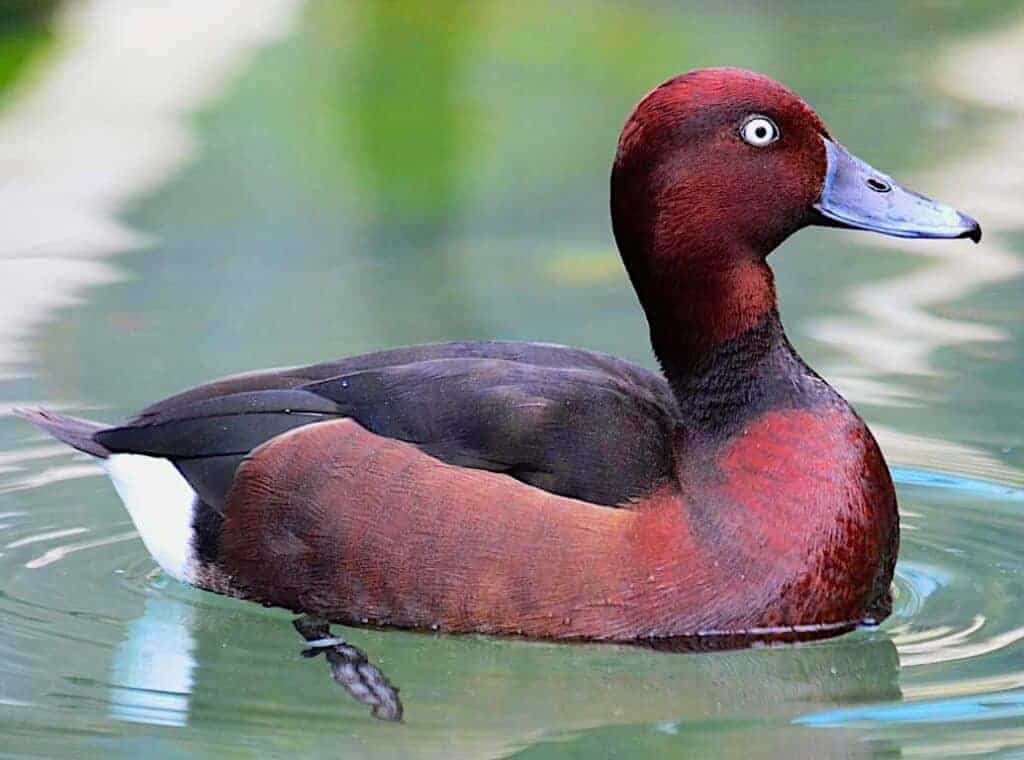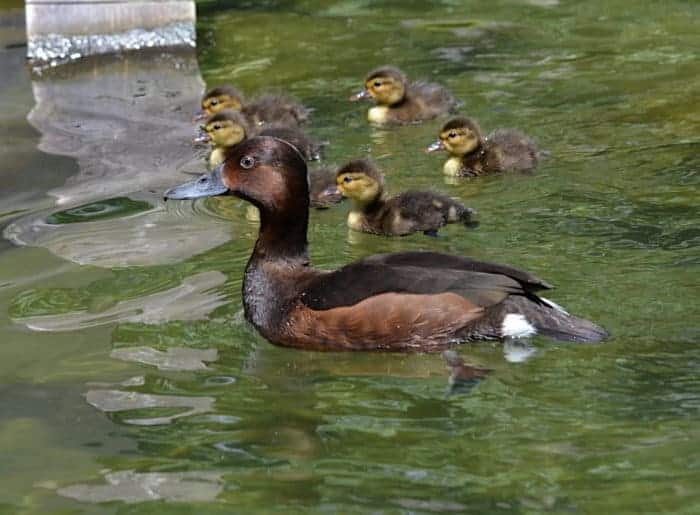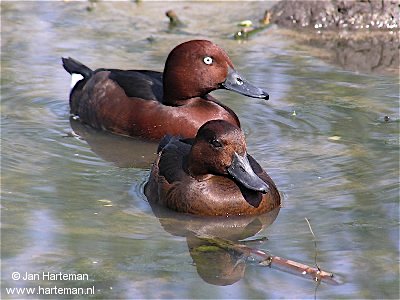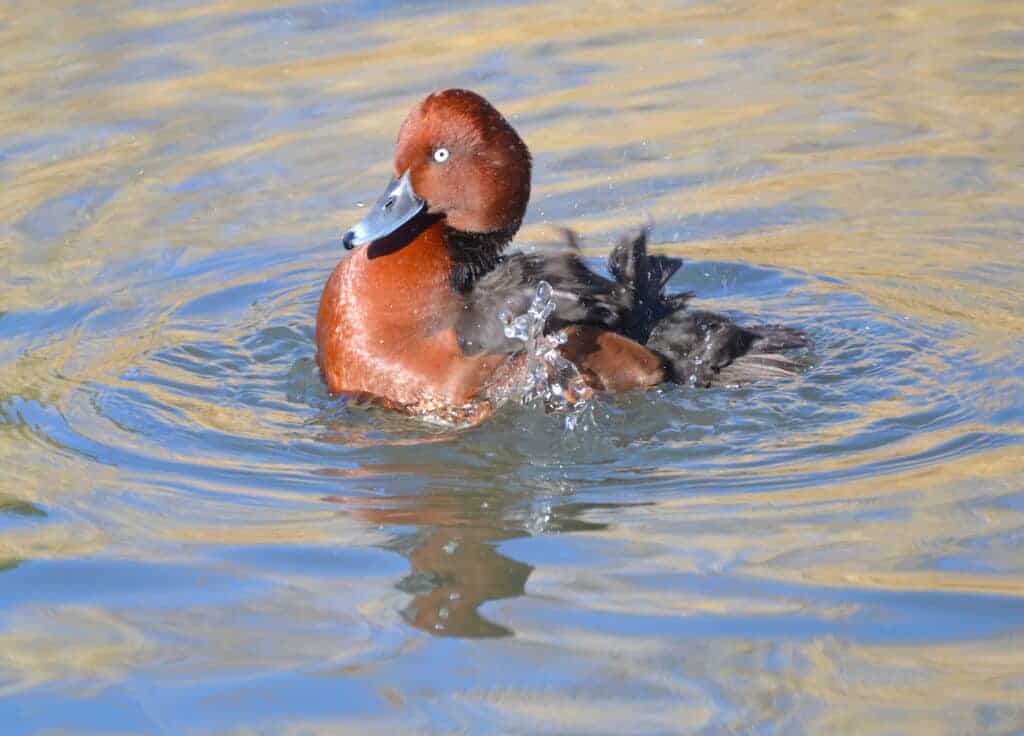Ferruginous Duck



Aythya nyroca
The dainty Ferruginous Duck is essentially a dark burnished brown or reddish-brown diving duck with white undertail coverts. The duck is slightly duller and lacks the drake’s pale eye.
Wild populations do fluctuate with water levels from year to year. Despite a wide range over Europe and Asia, there have been rapid declines in Europe, but evidence of declines in the larger Asian populations is sparse and sometimes contradictory. The species is currently listed as Near Threatened as it is suspected to be undergoing a moderately rapid overall decline.
The main human threats to the Ferruginous Duck are the alteration of wetlands, reed destruction, illegal hunting, and aquatic pollution. Changes to aquatic vegetation/habitat in some areas has come from the introduction of non-native species; particularly Grass Carp Ctenopharyngodon idella, leaving the ducks without natural forage.

These are shy birds of lakes and marshes, usually with surrounding reeds. They often stay hidden in emergent vegetation, but at other times can be seen out on open water. They appear to enjoy the sparse company of their congeners, such as Tufted Duck Aythya fuligula and Common Pochard Aythya ferina. However, in aviculture, there is a risk of hybridisation.
Most popular in European collections, Ferruginous Ducks will make a hollow nest of down and vegetation close to the water, often among emergent vegetation. 7-10 pale buff eggs are incubated by the female alone for 25-27 days.
This species will interbreed readily with several of the other diving ducks, so it is wise to keep the Aythya ducks apart.
FURTHER READING
BirdLife International (2021) Species factsheet: Aythya nyroca. http://www.birdlife.org
Mitchell, D. 2019. BirdGuides Ferruginous Duck photo ID guide
Robinson, J A & Hughes, B. 2006 CMS/AEWA International Single Species Action Plan for the Conservation of the Ferruginous Duck